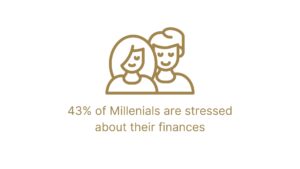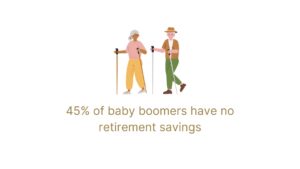Financial wellness is gaining recognition as a crucial component of overall well-being. Individuals who manage their finances effectively and plan for the future are better equipped to handle emergencies, avoid debt, and pursue their financial goals. In this article, we will define financial wellness, discuss its significance, analyze financial wellness statistics across different age brackets, and suggest steps to improve financial wellness. Additionally, we will examine employee financial wellness statistics and their impact.
Defining Financial Wellness:
Financial wellness is the state of being in control of one’s financial situation, making informed financial decisions and having the necessary resources to meet financial goals and obligations. It encompasses factors such as budgeting, debt management, savings, and retirement planning.
Financial Wellness Statistics by Age Brackets:
Let’s delve into financial wellness statistics of individuals within different age groups:
- Millennials (born between 1981 and 1996):
- 43% of millennials are stressed about their finances, with 47% citing debt as the primary source of their stress, according to a survey by PwC.
- A study by TIAA reveals that only 29% of millennials are confident in their ability to effectively manage their money.

- Generation X (born between 1965 and 1980):
- A report by the Employee Benefit Research Institute (EBRI) states that around 42% of Gen Xers have not yet started saving for retirement.
- The Federal Reserve reports that 25% of Gen Xers have outstanding student loan debt, impacting their financial well-being.

- Baby Boomers (born between 1946 and 1964):
- A study conducted by the Insured Retirement Institute reveals that approximately 45% of baby boomers have no retirement savings.
- A Transamerica Center for Retirement Studies survey shows that only 18% of baby boomers believe they will have enough money to retire comfortably.

Improving Employee Financial Wellness:
Regardless of age, individuals can take steps to enhance their financial wellness:
- Create a Budget: Develop a comprehensive budget to track income and expenses, ensuring money is allocated wisely.
- Debt Management: Prioritize paying off high-interest debts and explore debt consolidation options to alleviate financial stress.
- Emergency Fund: Establish an emergency fund to cover unexpected expenses, aiming for three to six months’ worth of living expenses.
- Retirement Planning: Take advantage of retirement savings accounts and seek professional advice to develop a solid retirement plan.
- Financial Education: Continuously expand financial knowledge through books, online resources, and attending financial seminars or workshops.
Employee Financial Wellness Statistics:
Employee financial wellness has become a crucial issue in recent times. According to the PwC 2021 Employee Financial Wellness Survey, around 69% of employees are stressed about their finances, and 47% have faced financial challenges over the past year. This is vital as employee financial wellness impacts job productivity, retention, and morale.
The survey also shows that about 22% of employees struggle to meet monthly expenses, and nearly 43% have less than three months of living expenses saved. The survey revealed that student loans, childcare expenses, and healthcare costs are the leading causes of financial stress among employees.
Impacts of Employee Financial Wellness:
Financial wellness significantly impacts individuals, employers, and society. Improved financial wellness leads to reduced financial stress, anxiety, and increased well-being. Financially well individuals have higher savings rates, better credit scores, and more investment opportunities, leading to financial stability and prosperity in the long term.
Moreover, employers that invest in financial wellness programs can reap significant benefits. Financially secure employees experience lower absenteeism, increased productivity, and improved decision-making – benefitting the employer by saving millions of dollars on healthcare costs, insurance premiums, and employee turnover.
The Society for Human Resource Management posits that employees experiencing financial stress impact the overall work environment and morale of the business, leading to job dissatisfaction and burnt-out individuals.
In conclusion, financial wellness is an essential aspect of our lives. Developing financial habits and setting goals increases financial wellness, success, and security. The statistics across different age brackets highlight the need for improved financial wellness initiatives for individuals, employers, and society. The impacts of financial wellness ripple into various areas, from reducing stress levels to improving employee retention, better workforce morale, and a thriving society.
Financial Coaching, EAP Programs, Employee Financial Well-Being Corporate Challenges are cost effective strategies organisations can consider to create a culture of employee financial wellness.
References:
- PwC 2021 Employee Financial Wellness Survey:
- Society for Human Resource Management:
- TIAA 2019 Financial Awareness Survey:
- Insured Retirement Institute:
- Transamerica Center for Retirement Studies:
- Employee Benefit Research Institute:
- Federal Reserve: https://www.federalreserve.gov/publications/files/scf17.pdf